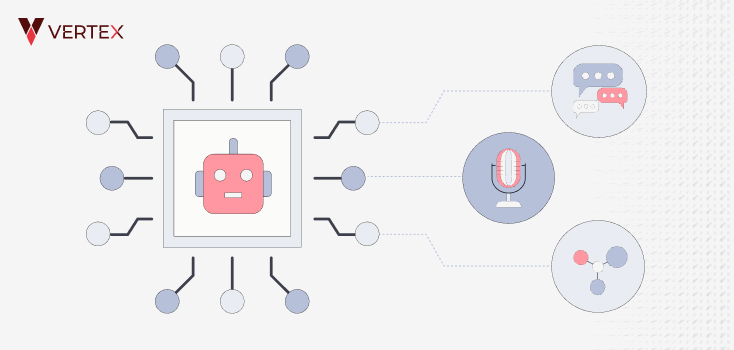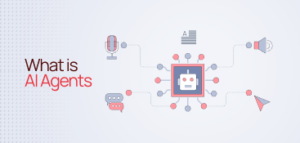What Are AI Virtual Assistants? Types and Use Cases
October 23, 2025 • By Peter Stakoun

Artificial intelligence or AI, is changing how we work, shop, learn, and communicate with others. One of the most useful tools to come out of this switch is the AI virtual assistant. These software programs are built to help users with everyday tasks, answer queries, and even support complex operations of businesses.
Let’s find out more about AI virtual assistants.
What Is an AI Virtual Assistant?
An AI virtual assistant is software that makes use of artificial intelligence to understand input of the user, make sense of it, and follow up in a helpful way. You might have seen them as chatbots on a website or voice-enabled assistants on your phone.
They use natural language processing (NLP) to comprehend human language, machine learning (ML) to make improvements with use, and automation to carry out tasks efficiently.
As per Grand View Research, the global intelligent virtual assistant market is expected to hit USD 14.10 billion by the year 2030. This shows just how fast such tools are growing part of daily business and life.
You’ll find them in mobile apps, on websites, and inside company tools. As the demand builds, so do their abilities.
4 Types of AI Virtual Assistants
Not all AI assistants are the same. Depending on their purpose and design, they serve varied functions. Some are text-only. Others rely on voice. Some can handle both these—along with visual prompting.
Text-Based Assistants
Such assistants work through typed messages. You’ve probably seen them on websites as chatbots. They answer questions, assist with navigation, and curate basic info from users.
Businesses like using them because they can manage high volumes of queries without requiring a person on standby. They could also be integrated into messaging apps or team coordination tools e.g., Slack or Teams.
Unlike older scripted bots, modern text-based assistants understand real-world language and offer more human-like replies. That makes the conversation smoother and less frustrating for end-users.
Voice-Based Assistants
Voice-based assistants work with spoken commands. Popular examples can be Siri, Google Assistant, & Alexa. They respond to questions like “What does the forecast say for today?” or “Remind me to call Mom.”
Such assistants are helpful when the user’s hands are busy. Drivers use them to drop texts or get directions. People use them at home to have control of lights, alarms, or music. They also help those users who have visual impairments interact with devices more easily.
In business, they’re being tested for things like meeting scheduling, voice-activated search, and smart workspace control.
Multimodal Assistants
Some of the best AI virtual assistants today work across several input types—text, voice, and visuals. These are called multimodal assistants.
A good example is ChatGPT, which can understand text, voice, and also images in its newer versions.
Multimodal assistants work well in advanced settings. Let’s say, a technical support tool could review error logs (visual), listen actively to customer concerns (voice), and suggest a solution (text).
They are especially handy in enterprise environments or tools that are used by analysts, engineers, and decision-makers.
Task-Based Virtual Assistants
Such assistants aren’t designed for general conversation. Instead, they’re built to finish particular tasks smoothly. Think of them as AI-powered doers.
An example would be a travel assistant that:
- Books flights
- Suggests hotels
- Tracks itineraries
- Sends updates automatically
Unlike traditional assistants, task-based ones are more process-driven and usually sit inside industry-specific apps or internal company tools.
Task-based assistants help teams cut time used on repetitive tasks and cut down on human error.
6 Use Cases Spanning Multiple Industries
AI virtual assistants have practical use in nearly every sector. Their capacity to deal with large amounts of data, answer repetitive questions, and carry out commands with speed makes them a sound choice for many operations.
Customer Service
Customer service teams were among the first to benefit from virtual assistants. Businesses utilize them to handle:
- Usual questions
- Order tracking
- Service status updates
- Complaints and Solutions
Since they work 24/7, customers don’t need to wait for office hours. This cuts support costs and enhances response time.
E-commerce and Retail
In online stores, AI virtual assistants help shoppers:
- Find the right products
- Check order status
- Manage returns or refunds
- Suggest items based on previous shopping behavior
They amp up end-user experience while collecting data on consumer preferences. This leads to optimized inventory planning and marketing decisions.
Healthcare & Telemedicine
In the healthcare sector, these assistants play a useful role by:
- Booking appointments
- Running basic symptom checks
- Guiding patients with post-care instructions
- Reminding them to take their medications
They don’t replace doctors, but they do reduce the work volume on support staff and upgrade communication between clinics and patients.
Education
Students and teachers use virtual assistants to:
- Answer different questions
- Offer personalized tutoring
- Translate languages
- Assist with research
Whether it’s helping someone practice a newer language or explaining a math concept, such assistants are available any time of day.
Business and Enterprise
Inside companies, assistants support employees by:
- Setting up meetings
- Summarizing reports
- Sending reminders
- Managing team workflows
AI-powered virtual assistants free up time so teams can zero in on complex work rather than redundant tasks.
Banking and Finance
Financial services now make use of virtual assistants to:
- Answer questions about accounts
- Help with online payments
- Alert customers about unusual activity
- Provide budgeting tips
They allow banks to serve more people at once without hiring extra staff. Plus, they assist reduce fraud by monitoring patterns and issuing alerts.
Subscribe Newsletter for Latest Updates
Vertex IT Solutions: Your Partner in AI Innovation
Businesses today need more than basic automation. They need smart systems that adjust, learn, and deliver real value. Vertex IT Solutions provides AI solutions that are designed to solve real business problems—not just automate everyday tasks.
Our generative AI & ML services help companies convert raw data into smart actions, improving decision-making, efficiency, and end-user experience.
We offer:
- AI-Powered Automation to carry out repetitive workflows
- Custom ML Models practiced to reflect your business logic
- Content & Data Processing for fast, accurate insights
- AI-Based Decision Support to guide smarter choices
Here’s how we work:
- We study your challenges and end-goals
- Build tailored AI systems that use real-world data
- Continuously optimize performance after launch
Ready to bring intelligence into your systems? Contact Vertex IT Solutions to dig into what our AI solutions can do for your business.
Final Thoughts
AI virtual assistants are no longer experimental tools. They save time, boost customer service, and cut human error. Whether you’re a smaller business or a large-scale enterprise, they can make a noticeable difference.
Instead of relying on off-the-shelf tools, many companies are choosing custom-built assistants that mirror their goals. That’s where Vertex IT Solutions adds value — building AI that fits your world, not the other way around.
Explore our case studies to view how we deliver practical results across industries.










